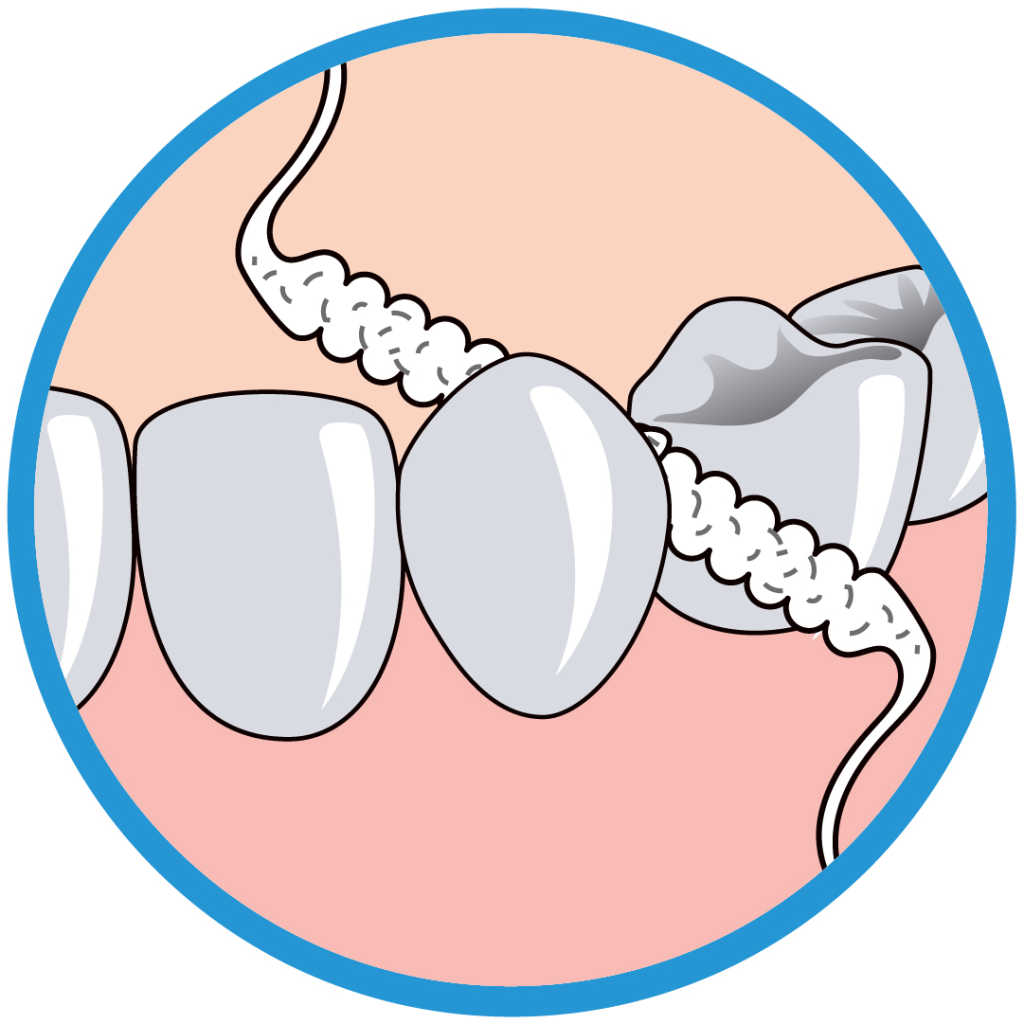Flossing is a crucial part of maintaining oral hygiene and preventing dental issues like cavities and gum disease. This guide covers everything you need to know about how to floss properly, including specific tips for those with braces.
Why Flossing is Essential

Mechanical removal of plaque biofilms is vital for preventing oral diseases. Brushing alone isn’t enough to reach all the tight spaces between your teeth. Flossing helps remove plaque and food particles from these areas, contributing significantly to your overall oral health.
How to Floss Correctly

- Use the Right Tools: All the following flosses are dentist-approved, so choose the one that works best for you:
- Nylon Floss: Available waxed or unwaxed. Waxed floss slides more easily between tight teeth, while unwaxed floss may be better for larger gaps.
- Monofilament Floss: Less likely to shred and can be easier to use.
- Proper Length: Cut about 18 inches of floss. Wind most of it around your middle fingers, leaving about 1-2 inches to work with.
- Technique:
- Hold the floss taut between your thumbs and index fingers.
- Gently slide it between your teeth using a sawing motion. Avoid snapping the floss into your gums.
- Curve the floss into a C shape against the side of the tooth and slide it under the gumline.
- Move the floss up and down, rubbing it against both sides of each tooth.
- Use a clean section of floss for each tooth.
Floss Picks and Holders, An Alternative to Regular Flossing

If a patient has difficulty flossing, a floss pick may be recommended. Floss picks are small handheld tools with a short piece of floss held taut by a plastic frame. They are useful for people with limited dexterity, such as patients with arthritis, or those who find traditional flossing challenging. They also offer extra portability for those who need it.
However, flossing using a floss pick is not as good as using regular floss. This is because it does not allow for the same thorough cleaning as traditional floss, especially in terms of adapting to the contours of each tooth. Floss picks also move bacteria from one area of your mouth to another. As a result, most dentists will recommend against floss picks when regular flossing is possible.
How to Floss with Braces
Flossing with braces can be challenging, but it’s essential for maintaining oral health during orthodontic treatment. To be clear, regular flossing is better than using the following methods. However, if you are unable to floss using regular methods due to manual dexterity issues or orthodontic appliances, something is still better than nothing. Some common alternatives to flossing with braces include:
Superfloss

Superfloss is like regular floss but divided into a stiff end, spongy middle, and regular floss. Its stiff end allows it to be fitted into small crevices, while the spongy middle allows for wider gaps to be cleaned.
- Usage:
- Threading: Use the stiff end to thread under the main wire of your braces.
- Position the Floss: Slide the regular floss between your teeth gently using a sawing motion.
- Clean Around Braces: Use the spongy floss section to clean around brackets and wires or under bridges. Move back and forth to scrub away plaque.
- Floss Each Tooth: Curve the regular floss into a C shape against each tooth, sliding under the gumline. Move up and down to clean.
Interdental Brushes and Soft Picks

Interdental brushes and Soft-Picks are small brushes designed to clean between the teeth in patients who find regular flossing difficult. They are recommended to be used daily between the teeth and replaced every 1-2 weeks.
- Usage:
- Gently insert the brush between your teeth and move it back and forth to remove plaque and debris.
- Choose the right size to avoid causing damage to the gums.
Water Flossers

Water flossers use a stream of pressurized water to remove plaque and debris from between teeth and below the gum line. They are especially beneficial for people with braces, implants, or those who find traditional flossing difficult.
- Usage:
- Aim the water stream at the gum line and between teeth.
- Use for about one minute, ideally once or twice daily.
Conclusion
Flossing is an essential part of your daily oral hygiene routine. By following the correct techniques and using the right tools, you can effectively remove plaque and maintain healthy teeth and gums. If you have braces, don’t be discouraged—special tools and techniques can make flossing manageable and effective. For personalized advice, consult your dentist or dental hygienist.
Disclaimer
The contents of this website, such as text, graphics, images, and other material are for informational purposes only and are not intended to be substituted for professional medical advice, diagnosis, or treatment. Nothing on this website constitutes the practice of medicine, law or any other regulated profession.
No two mouths are the same, and each oral situation is unique. As such, it isn’t possible to give comprehensive advice or diagnose oral conditions based on articles alone. The best way to ensure you’re getting the best dental care possible is to visit a dentist in person for an examination and consultation.
SAVE TIME AND MONEY AT ANY DENTIST

Less dental work is healthier for you. Learn what you can do to minimize the cost of dental procedures and avoid the dentist altogether!

